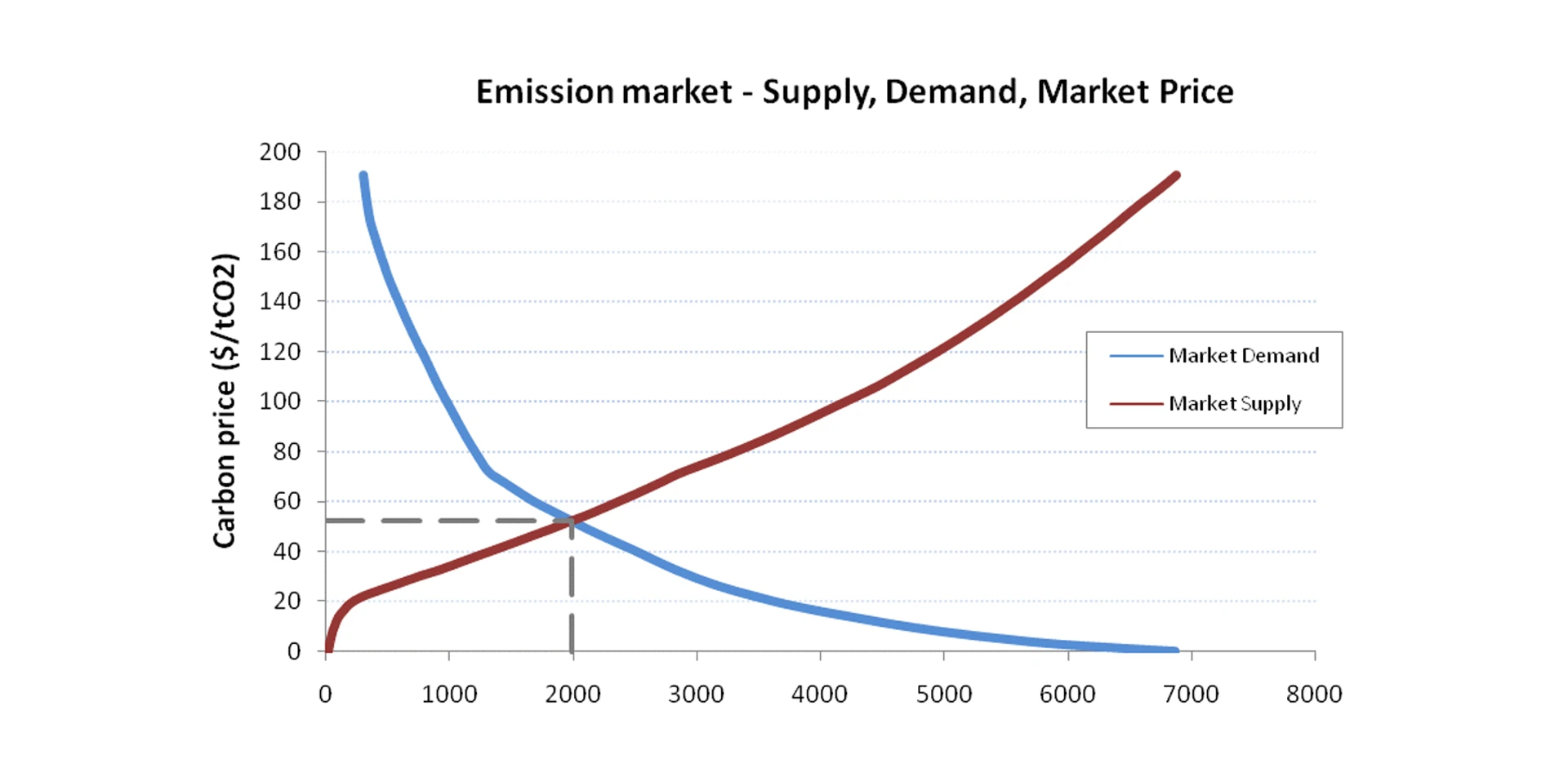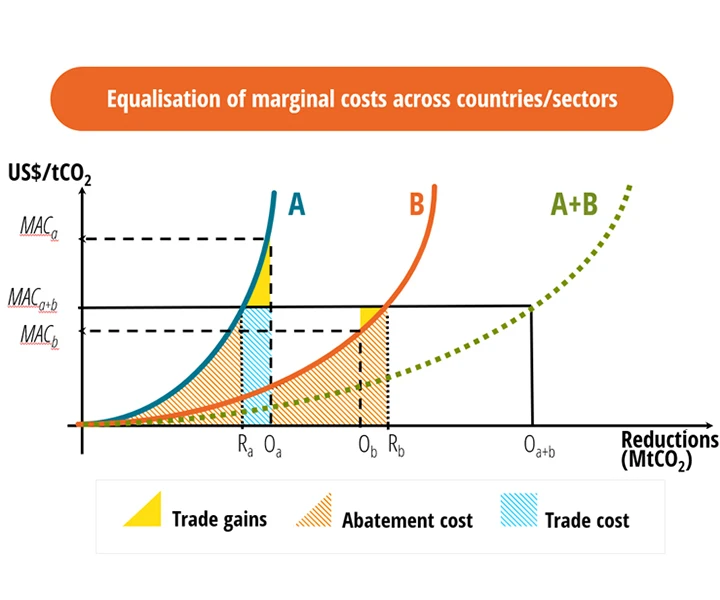CMT allows for a powerful and detailed analysis of existing and fictive carbon markets worldwide. It makes use of marginal abatement cost curves derived from the POLES model and provides multiple design options for carbon market configurations.
Key Features
- Coverage: 66 countries, 20 emitting sectors
- 6 greenhouse gases: CO2, CH4, N2O, SF6, PFCs and HFCs
- Various time horizons: 2020, 2030, 2040, 2050
- Main inputs: marginal abatement cost curves on a sectorial basis
- Permit trading based on equalisation of marginal costs
- Design options: CDM credits, hot air, limitation of credits trading, ceilings on credits purchases, taxation of credits traded, etc.
- Multiple market levels for configuration and result analysis: e.g. international, ETS and non-ETS, etc.
- Consideration of all GHG or CO2 separately
- Comprehensive analysis of quantities (domestic reductions, permit imports) and economic triggers (marginal abatement costs, total abatement costs, etc.)
- Shared effort among sectors and countries
- Reductions: domestic and traded
- Economics: total abatement cost, marginal abatement cost
- Resulting carbon price per market
- Different countries
- Diverse sectors and sub-sectors
- Various years
Emission market - supply, demand, market price

References
- Danish Energy Agency (Denmark): Development of the CMT model: production of energy scenarios, calibration on the IEA WEOs, production of MACCs, design and realisation of a detailed tool to define GHG targets and configure emissions trading market.
- Official presentation made by the EU with GLOCAF and CMT results.
Related Products & Solutions
AERO: Abatement Effort, emissions Reduction Options
Assessment of emissions reduction options for different climate / energy scenarios.
Granular Energy Demand Forecast
Unique, independent projections of consumption by end-use.
Related Services
Design and Interpret Energy Forecasts
Energy Forecasting is a 2 days training to learn to design and interpret energy forecasts.
